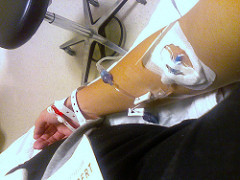Expert and amateur hikers and campers alike are familiar with the dangers of poison oak, ivy, and sumac. In fact, it’s the first merit badge many Cub Scouts get. For good reason: the aggravating rash, welts, and itch can stay with you for FAR too long and drive you up a wall. While learning to recognize and avoid these plants is clearly the best way to approach any outdoors situation, these plants have a habit of surprising us or catching us unawares. So once you’ve got it, what do you do about it? There is only one sure-fire cure, so find out about it below.
First, let’s learn a bit about these allergy-inducing plants.
Poison Ivy
It’s not actually an ivy at all. It can be found growing as a trailing vine, a shrub, or a climbing vine in many parts of the United States. It produces an oil with its sap called urushiol (not urush-oil) that, when it comes in contact with the skin just by brushing up against the plant, causes a severe itching rash.
To avoid poison ivy, stay away from any plants that grow with clusters of three leaves, especially if they have red stems. There are a number of mnemonic devices to help: leaves of three, let it be; red leaflets in spring, it’s a dangerous thing; longer middle stem, stay away from them; and so on.
Poison Oak
This is a bush that grows up to three feet tall. It has 6-inch long leaves that alternate in groups of three. The leaflets are hairy and irregular sizes, but they look a lot like white oak leaves.
Like poison ivy, just brushing up against poison-oak will cause a severe allergic reaction in many people and non-human animals. While it starts out as just itching, you can tell it is poison-oak because the skins soon becomes inflamed, develops non-colored bumps, and turns into blisters when scratched.
Poison Sumac
This is a proper tree, growing up to 20 feet tall, that has leaves made up of 7-13 leaflets. It is almost always an odd number of leaflets, unless there is a mutation. It has the same allergic properties as poison ivy, because it makes the same oil: urushiol. There is one major difference though, and that is that poison sumac can be deadly.
If an unfortunate hiker or camper inhales smoke from using poison sumac as fire wood, he or she will suffer extreme pain and severe respiratory difficulty that, if untreated, can result in death.
The Cure
Allergic reactions are basically a confused response from your immune system, so Prednisone, an immunosuppresant, is used to return the immune system to normal function.
It works like this: you take Prednisone, it gets to the liver where it is converted into prednisolone, an active steroid, which then tells the adrenal gland to chill out, and then all is better!
Take 60 mg of Prednisone for 5 days, then 40 mg for another 5 days, and 20 for 5 more. The rash will be gone after 6 or 7 days, but keep taking it to make sure you recover well.
To learn what Sandi Smith has to say about other things and look on the things from his point of view, visit http://www.mainmeds.net/the-miracle-cure-for-woodsmen.html where he frequently writes on many different subjects that you will find fascinating.

